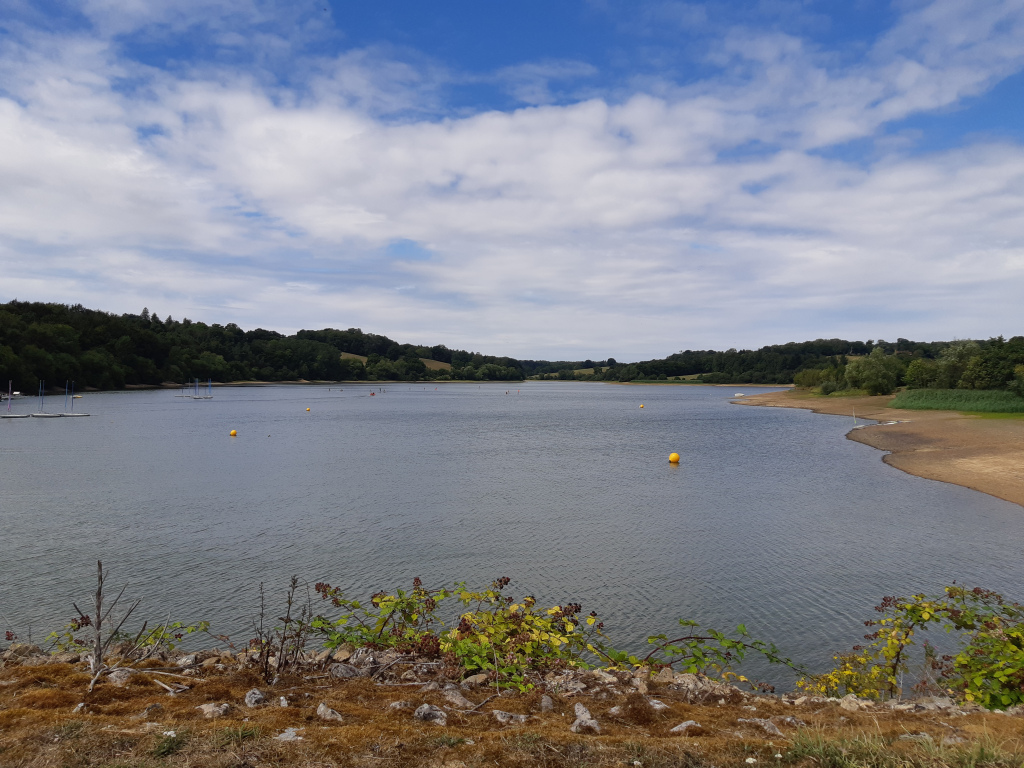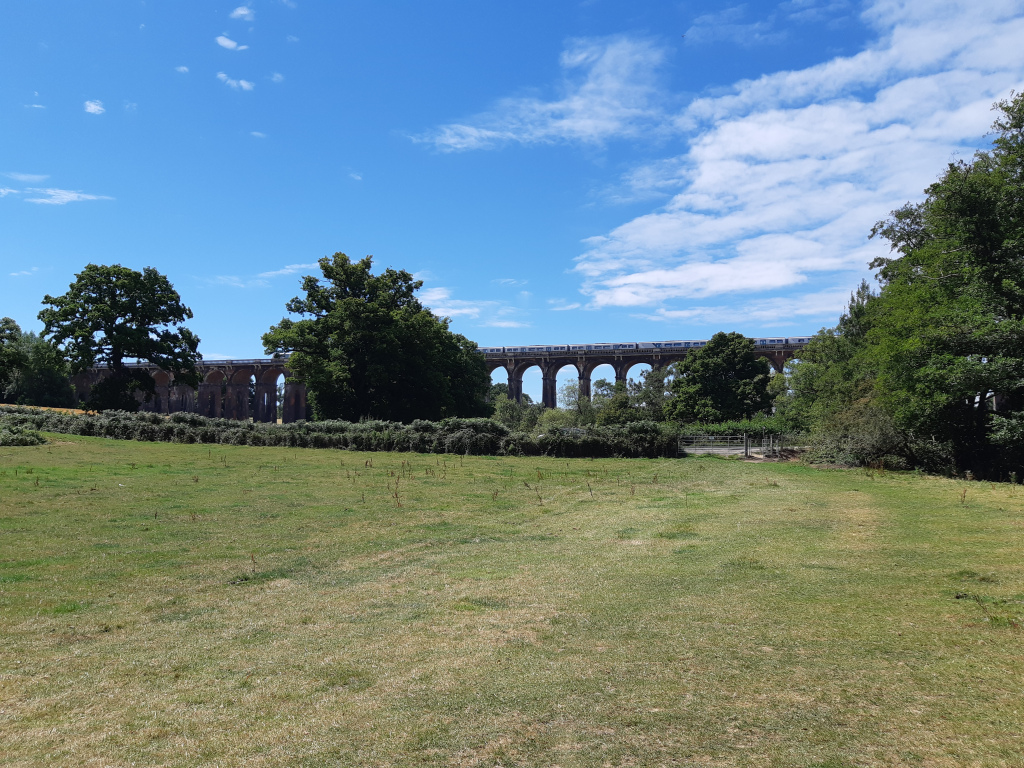This trek is inspired by a screensaver picture that popped up on my laptop recently, usually the many images are of far flung places around the globe but this particular one was in West Sussex. The walk is little further afield but features two incredible trails near to Ardingly taking in one the most elegant viaducts in Britain and also the very tranquil Ardingly Reservoir.
In total the two routes cover 10km (6 miles) but can easily be split into two. The walk is not circular or linear like my normal treks, but instead back tracks along footpaths walked, which in it’s own way works well by offering different perspectives of the same walk.
The best place to park is the Reservoir car park to the rear of Ardingly College, the first thing you’ll notice here is the steep slope of the 280m long by 17m high dam that was built in 1979 to block a tributary of the Ouse called Shell Brook, whereby creating the 74.5 hectares of reservoir. The valve tower seen here is used to release water from the reservoir either directly into the treatment works or into the River Ouse when water flow is low, this ensures that there is enough water flowing in the River Ouse to protect the aquatic wildlife. The smaller overflow bell mouth, allows storm water to overflow into Shell Brook and stops the reservoir from flooding. The reservoir contains 4.7 million litres and is 14m at its deepest.
To reach the Ouse Valley Viaduct, head out past the activity centre and follow the Sussex Ouse Valley Way which rises up and across the fields. Although not evident this first part actually follows part of the route of the London to Brighton roman road. The path heads down hill where two small bridges are crossed. From here keep the River Ouse on your right and follow along its banks, the river is not very big at this point as it is only 10 km from its source near Lower Beeding but ultimately much wider where it enters the sea at Newhaven. As you follow along the Ouse Valley the first glimpses of the magnificent viaduct come into view.
Built in 1842 the viaduct is located on the London-Brighton line just south of Balcombe, it spans 450m of the lowlands of the River Ouse and at its highest is 29m. It was designed by the engineer John Urpeth Rastrick and its elegance was enhanced by architect David Mocatta who built a stone cornice with balustrade along the top and erected classical pavilions at each end. The grade 2 structure comprises of 37 arches and 11 million bricks with 4/5 trains thundering overhead every hour.
The path passes right underneath and one of the best views can be had by looking down through the arches as they create an illusion of infinity, access can be gained to the river allowing you to further explore the viaduct.
Retrace your steps to the reservoir and back at the dam take the path known as the Kingfisher Trail along the eastern shore of the reservoir. The kingfisher trail closely follows the edge of the water and passes through many copses both old and new that contain a mix of deciduous and coniferous trees and are home to much wildlife including Bats and Dormice. There are also two hides located at the south edge and north edge of the reservoir where you can see the many bird species that reside here and also that stop off here on their long migratory journeys.
The trail meanders around the shoreline and continues along a causeway that bisects part of the body of water created by the Ardingly Brook and then continues on the bridleway north towards Balcombe. On the Balcombe arm of the reservoir great views can be had looking back towards the dam.
Information boards along the trail provide more detail of the reservoir. Unfortunately you cannot walk around the whole reservoir as the western shore is private property belonging to the Balcombe Estate, so retrace your steps back to the car park to complete the walk.


